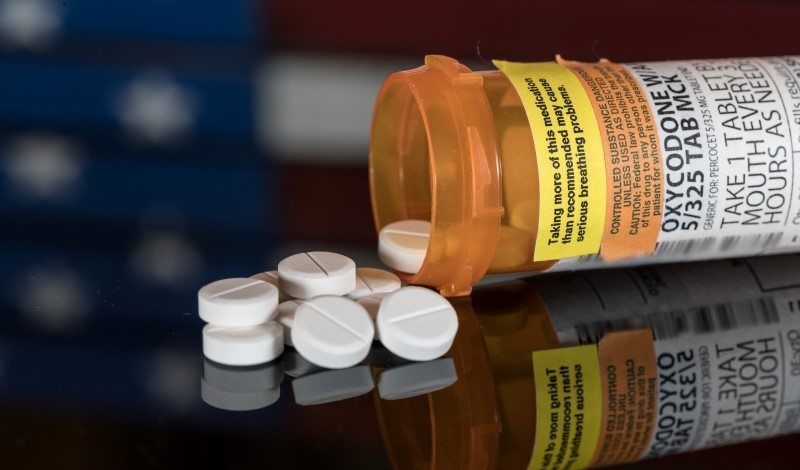
Expert advocates a variety of policies that local governments can take to combat increasing fatalities from drug overdoses.
Drug overdoses cause more deaths than homicide, suicide, and car accidents. At present, over 100,000 Americans die of drug overdoses every year, and current reports indicate this rate will only increase in coming years.
Local governments are poised to play a central role in mitigating the harms of drug use, according to a report by Charles Fain Lehman of the Manhattan Institute. Lehman argues that local governments are “the closest entity to the front lines of the crisis” and may, as a result, be uniquely capable of confronting the crisis within their own communities.
Since 2000, the drug overdose death rate has quadrupled, with its rapid increase reflecting changes in the demographics most affected by the epidemic.
Twenty years ago, drug overdoses primarily occurred amid white, middle-aged populations living in rural areas, such as Appalachia. But with the creation of new synthetic opioids, including fentanyl, drug overdoses now concentrate in urban areas.
One tool that may empower local policymakers to combat the rise in fatal drug overdoses is naloxone, a medication that can quickly reverse the effects of an opioid overdose. Lehman argues that local jurisdictions should equip their first responders with this medication.
Lehman explains that current research on naloxone access laws, which include laws allowing the purchase of naloxone without a prescription, is inconclusive. On the one hand, these laws increase the likelihood the drug will be available at the time of an overdose. But on the other hand, some experts worry that widespread availability of naloxone may inadvertently encourage more opioid use by creating an overstated sense of safety.
Local regulators can minimize this downside, however, by tying naloxone distribution to their jurisdiction’s other drug treatment methods, says Lehman. He favors creating a more holistic strategy that preserves the advantages of naloxone access laws while limiting their risks.
In addition, Lehman encourages local governments to make concerted efforts to fill the “treatment gap.” The federal government estimates that over 40 million Americans require treatment for substance-use disorders, but only 4 million actually receive it.
Lehman suggests that local policymakers can address the treatment gap in two ways: by increasing the number of treatment facilities, and by increasing the efficacy of treatment methods to reduce relapse rates post-intervention.
Local governments have already made headway in increasing the sheer number of facilities, as they now operate double the share of facilities operated by state and federal governments, explains Lehman.
Lehman acknowledges that improving treatment efficacy “interfaces uncomfortably with America’s federalized system” because local governments cannot set regulations concerning the use of certain medication-assisted treatments.
Several medications can serve as opioid substitutes to lessen addiction-induced cravings without risking death, and research shows that these medication treatments significantly decrease overdose fatality rates. Lehman argues that local governments, despite lacking larger regulatory authority, can capture these benefits by mandating the use of medication treatments in the facilities they operate.
Lehman advises local policymakers to take steps to address the treatment gap before turning to more innovative—and often more controversial—solutions, including supervised consumption sites. Supervised consumption sites, also called overdose prevention centers, offer safe spaces for people to use pre-obtained drugs under the supervision of medical professionals.
Lehman cautions that these facilities may be illegal under the federal Anti-Drug Abuse Act of 1986 (ADAA), which prohibits maintaining property “for the purpose of manufacturing, distributing, or using any controlled substance.” Advocates argue, however, that the original intent of the ADAA did not encompass public health facilities.
Because the Biden administration has indicated it will not interfere with local governments that chose to implement supervised consumption sites, Lehman weighs policy considerations over legal analysis. He concludes the “scale and urgency” of the drug crisis necessitates that local governments consider these more radical options in light of their own municipal priorities.
According to Lehman, for policymakers to determine which approaches will be most effective in their jurisdictions, they require updated information on drug use habits—namely, what drugs are being used, where the drugs are being used, and how prevalent the use is.
With the elimination of earlier surveillance systems, including a now-defunct drug abuse warning network, the federal government struggles to track drug use in a timely enough manner to prevent subsequent overdoses.
To remedy this informational dearth, Lehman suggests that local governments track the level of drug metabolites in municipal wastewater to reveal drug consumption patterns in real time. Lehman identifies wastewater surveillance as a low-cost way to allocate crucial, and often limited, municipal resources.
Ultimately, Lehman urges local policymakers to avoid treating the drug overdose crisis as a problem too large for smaller-scale interventions. Although the crisis implicates powerful national and international forces, local policies can nonetheless constrain consumption, addiction, and death, he concludes.



